How Do I Create an Audio Exhibit?
Something we often take for granted in the world of interpretation is the process and equipment required when creating an audio exhibit. It’s obvious to us because we do it all the time, but when you think about it most people wouldn’t know where to start if suddenly tasked with creating an Audio Exhibit… this post aims to take a simple look behind the curtain and lay out exactly what is required when creating an audio exhibit…
How do I create an Audio Exhibit?
This is something many people ask, be it for museum, heritage or retail purposes. Working in the field of audio visual interpretation and design can make complicated things seem simple, it’s clear to us how you go about creating an audio exhibit, but for most people who visit a museum little thought goes into the equipment behind the scenes.
In reality, it’s actually quite simple, each of the examples pictured to the right have the same 3 elements in common. They use a;
- Player
- Trigger
- Output
These 3 things combined are behind almost every basic audio exhibit you’ve ever seen…
1. Player
This is the heart of an audio exhibit, essentially it’s what contains and plays your audio files. There are a number of solutions you can utilise here however a Solid State player will be the most reliable. You’ll also need to decide what you intend to Output to and also what will Trigger your player (more on those two things next).
At blackbox-av we have developed our own range of solid state audio players, the SoundClip. The SoundClip plays audio from an SD card, is easily programmed and can be activated (triggered) in various ways depending on the model. You’ll find the SoundClip in installations all over the world.
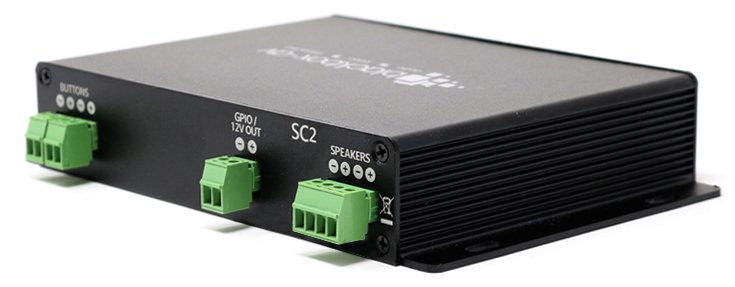
Pictured is the SoundClip-2. This can be programmed to either continuously loop content, activate content via up to 2 button inputs (in different ways, such as single track per button, next/previous mode to move through multiple tracks and so on). There are other SoundClips in the range which allow up to 16 button inputs…
2. Trigger
Your audio can be activated via AV trigger devices. If you have a purely looping exhibit then you won’t require a trigger. However if you have an exhibit that you want to be activated via human interaction, then you have a few options.
Buttons are always a great choice – pressing a button to activate content is something everybody understands, you can also use multiple buttons to allow visitors choice of what they want to hear. There are however more unique options available, for example a pressure pad that when stepped on can act as a ‘trigger’ and start the Audio Player, or a PIR sensor which detects human movement and triggers the Audio player.
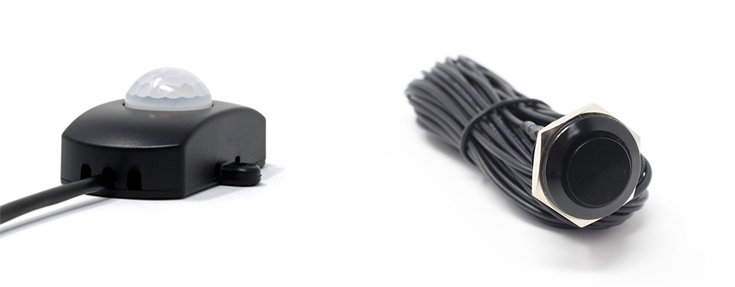
All triggers are essentially the same thing, they send a message to the Audio Player that it’s time to start playing content, it’s just the way this message is sent that changes depending upon your chosen trigger. Pictured is our small PIR and a standard black 16mm push button, however we have plenty more options available on our store, all of which are compatible with our range of SoundClip Audio Players.
3. Output
This is how visitors listen to your audio. Your basic options here consist of speakers or headphones/handsets. Headphones are most popular because they ensure audio bleed is kept to a minimum, although speakers are often used to share audio with groups or used with atmospheric sounds.
Our range of headphones/handsets are used all over the world thanks to their great quality sound and tried and tested ruggedness, making them ideal for use in public spaces. Read more about our Armour Cable Headphones here.
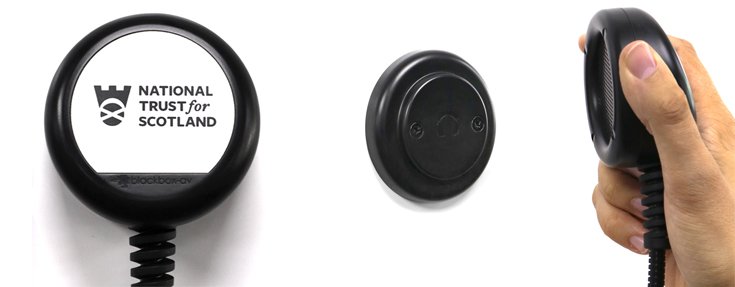
What’s even better is our range of AutoPlay headphones (the HDH version is pictured) can double as a Trigger as well when used alongside our Audio Players – this means when they’re lifted off their unique magnetic holders, audio can begin to play and when returned the audio will stop.
That’s pretty much it!
Then you just need to build these 3 items into housing of some kind, be it behind a wall, a desk, a free standing unit or something more unique like the drawer system pictured here. This Audio Exhibit is made up of…
But by building it into an interpretive unit which allows for artefacts and standard signage, it becomes a much more engaging and educational piece. Interested in creating a video exhibit? Read more about it here.
The 3 core elements stay the same…
…but the results can be very different, depending how you put them together. This example uses pretty much the same things;
But by building it into a full sized graphic and using a speaker instead of headphones, the effect is very different and allows multiple visitors to enjoy the audio interpretation together. The client has utilised our SoundClip-8 as a push button audio player, click here to read more about this project.
4. Lighting
There are of course additional things you can do to be creative, for example all of our Audio Players have a lighting output as standard (whilst the SC-8L had 8). This means you can also activate lighting whilst triggering audio, which allows you to do some interesting things…
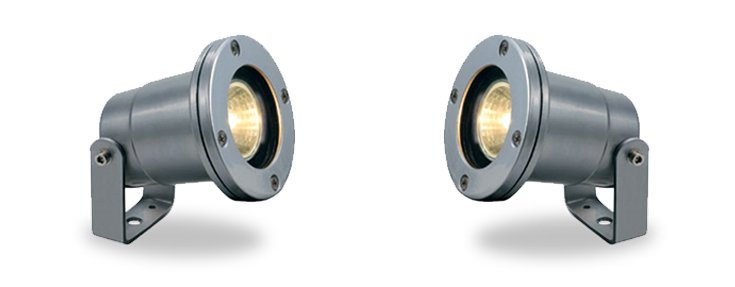
This is a standard spotlight that’s compatible with our SC range of Audio Players. You can also use other interesting things like coloured strip LED lighting that are able to create a great atmosphere.
You can illuminate items…
… with spotlights. For example you may have audio content which relates to specific physical items in front of the visitor, triggering the associated audio track will activate a spotlight which illuminates the item.
Or for this project where two spotlights are utilised to illuminate the bust of King Alfred the great. Using just;
A much more immersive and atmospheric experience was created, where the voice (acted of course) of King Alfred The Great emits from the bust, telling the story of his lie.
Or just create a spooky atmosphere…
…in this project for Dunster Castle a spooky atmospheric ‘ghost stories’ audio exhibit was created, using a;
- A SoundClip-8
- 8 push buttons
- 2 through panel speakers
- A Green LED Light Strip
All built into a custom housing allowing people to sit in the alcoves and listen to the ghost stories. Visitors push a button to choose which story to hear, which then begins to quietly emanate from the alcove, while a spooky green glow appears.
Sign up…
Sign up to our Newsletter below to receive news and exclusive insights.
The only limitation is your imagination
As you can tell from above, the same 3 elements – Player / Trigger / Output when combined in various ways and built into unique housings, can create very different results. The limitation really is your imagination.
All-In-One Solutions
If you’re not able to build the 3 elements into a custom housing, or want something simpler to integrate with your exhibit, you can utilise a range of all-in-one solutions we offer off-the-shelf. These include anything from a simple PIR activated speaker, to free-standing button units or even period styled telephones. All of which can be customised to your needs. Some options are below…
Message in a Speaker
The Message in a Speaker (MIAS) is an all in one unit which includes a high quality JBL speaker and PIR to allow easy inclusion of movement activated audio in your interpretive space.
With various play options including looping, single track, sequential and background mode, the MIAS is an incredibly flexible and simple to use device.
Audio Frame
The Audio Frame is the ideal customisable plug-and-play listening point. Use up to 12 buttons (with 2 separate volume + / -), personalise the full-colour graphics panel and output to Handsets or Speakers.
The Audio Frame can be equipped with a VESA mount or weighted stand, and all audio content can be easily updated via the rear SD Card port.
22″ Wall Mounted AV Point Modern
The Modern counterpart to the Traditional AV point, the 22″ AV-Modern presents HD Video and Audio in an all-in-one rugged yet sleek steel enclosure.
As with the traditional range, the screen is utilised to present the button selection, with up to 10 buttons worth of content available, not including the dedicated volume up and down. All easily programmed via a USB.
Period Telephone
The Period Telephone uses our unique Control Box to turn any phone with a BT plug (sometimes originals, oftentimes a reproduction) into an audio point.
Simply dial a number from 1-97 to hear the programmed content. If the phone has a bell/ringer it can be set to ring every 1-59 minutes and play a message upon answer.
Some of our work…
Here you can see some projects we’ve worked on that have used various audio techniques to bring their visitor attractions to life…
Hopefully this post been enlightening, if you have any questions at all about how to create an Audio Exhibit (or anything else for that matter!) please get in touch using the form below.
Or leave a comment at the bottom of the page…

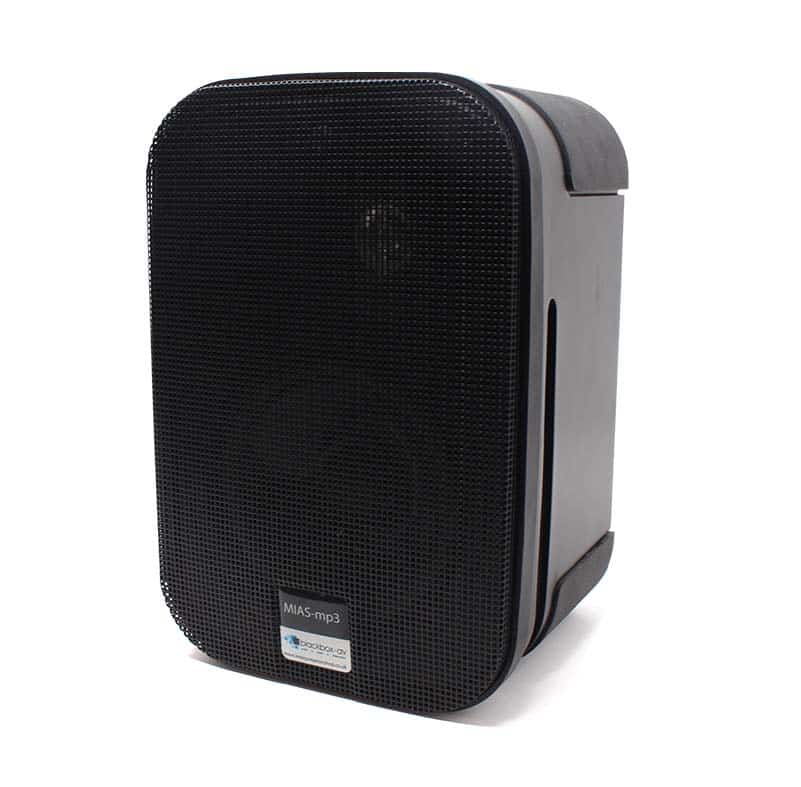
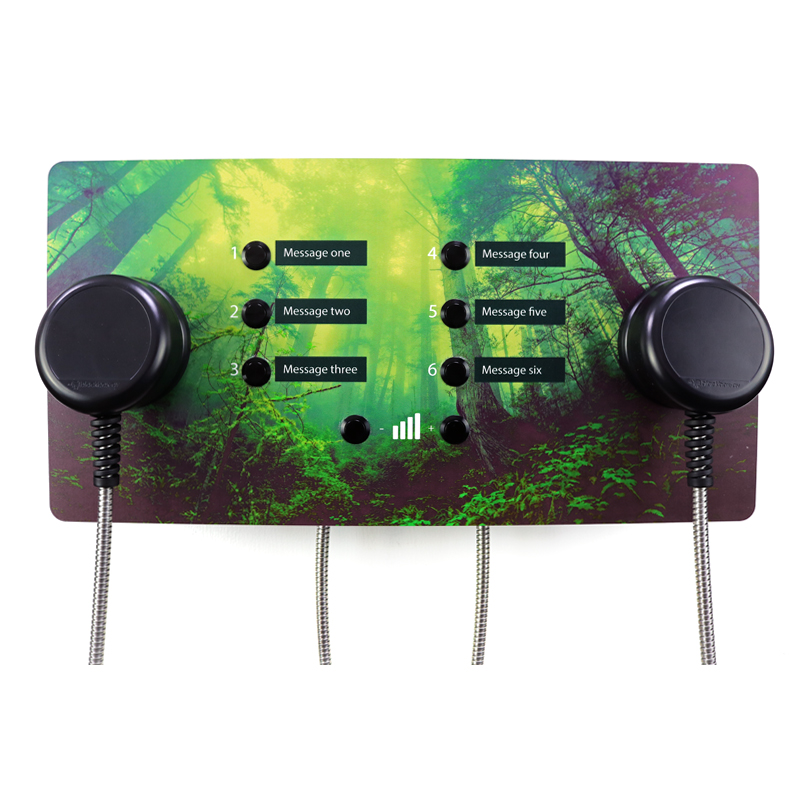

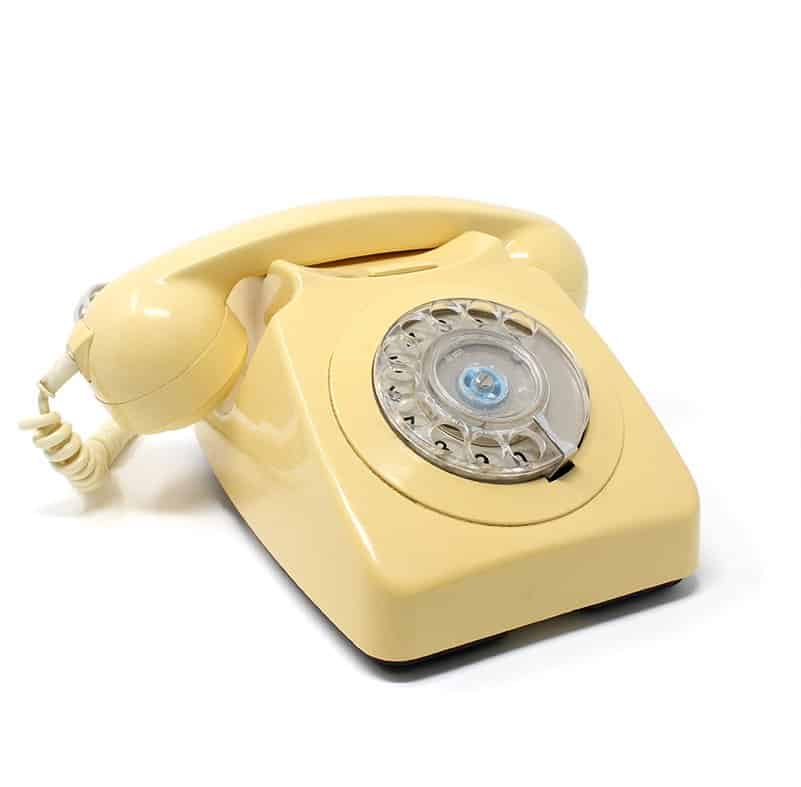
I am putting together a project which will included recorded interviews with volunteers at museums around Derbyshire. I have been considering a travelling exhibition which is simple to transport and erect at venues around the county to display the results of the project. I would like to know if there is a solution for playing audio files which is suited to accompany a travelling exhibition, simple to install and move between venues and easy for the public to use?
Hi Glynn,
Thanks for getting in touch. We’ll email you with some ideas shortly!
Hi the advice Glenn Wilson has submitted is similar to advice and costing that we need please can you send ideas and costs. Kind regards
Hi Helen,
Somebody will email you directly shortly.
Thanks for getting in touch!
Hello, I have a mobile museum that i set up out in public. I have a new display that I would like to add audio to. I have 17 audio tracts aprox. 1 min to 2min long. I would like to have button triggers for all 17 audio tracts and the sound be played through a speaker. It needs the ability to switch audio tracts if another button is selected. I just don’t know which player will accommodate 17 audio tracts & 17 triggers. Power source would also need to be addressed, stand alone power will be required. I am not a professional in this subject and learning as I go. Any help would be greatly appreciated. thanks
Hi Frank,
Thanks for getting in touch, sorry for the delayed response. We do have a battery powered audio player which you can see here: https://www.interpretationshop.co.uk/product/battery-audio-player/
However this will only support up to 4 tracks. Your requirement for 17 would make this a bespoke item, in which case I’ve passed your request and details on to sales who should get in touch with some ideas for you soon.
Hi
I’m putting together an escape room and want to incorporate both audio and visual ‘triggered’ events. The triggers will generally be small pressure pads and hidden contacts. We want to be able to incorporate several across various rooms. Can you help?
We also want to bring in projections and ‘holograms’ projected on to a head bust and suspended gauze, do you have any knowledge or experience in this?
Hi Marcus,
Triggered events are our speciality!
Somebody will be in touch shortly to discuss your project.
Good evening,
My family has a maritime museum in the Azores where we would like to implement an audio exhibit. A majority of our visitors are from other Countries, Switzerland, Ireland, USA, and other parts of EU, so we would like to keep each station in Portuguese and translated in English. Our area of operation is enough to fit 40-50 people. We are still in the midst of setting how this would flow throughout the museum, for now the exhibit showcase old maritime artifacts, and half models. Where would you recommend getting the necessary equipment for us to test our one or two stations? Whether that be a prerecording at each station or a recording on loop throughout the museum.
Look forward to hearing from you soon,
Hi Taylor, thanks for getting in touch! I see you’ve emailed in already and I believe somebody in sales has already responded. I’m sure they’ll manage to figure out the best solution for you in no time.